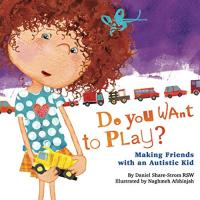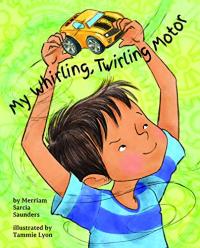
A picture book that introduces the concept of gender identity to young readers. Some people are boys. Some people are girls. Some people are both, neither, or somewhere in between. This straightforward exploration of gender identity will give children a fuller understanding of themselves and others. With child-friendly language and vibrant art, this book provides young readers and parents alike with the vocabulary to discuss this topic with sensitivity.
It Feels Good to Be Yourself: A Book About Gender Identity

Indian American middle schooler Reha navigates growth and loss in this 1980s coming-of-age novel in verse. Thirteen-year-old Reha deals with ordinary concerns; she tries to stay true to her Indian culture while growing up with in the United States, and she grapples with a crush on a classmate. When her mother suddenly gets sick with leukemia, Reha’s ordinary everyday concerns fade away and are replaced with the belief that if she is as virtuous as possible, she will save her mother’s life.
Red, White, and Whole

Iris loves to push the elevator buttons in her apartment building, except when it’s time to share the fun with her baby brother. That is, until the sudden appearance of a mysterious new button that opens up imaginary places where she can escape and explore on her own.
Lift

Hudi’s dad is athletic, but Hudi is not. Hudi is funny and well, chunky. In this fictionalized memoir, Hudi confronts his family’s expectation, school bullies, and how to be true to his real interests. The graphic format captures the tone, tensions, and wit of the story.
Chunky

Just when a big-eyed indoor cat thinks it knows all that it sees through various windows, it steps outside to discover a very different world. Illustrations in various media and staccato text are used to create a rich real and imagined world, perfect for multiple readings and close examination.
Inside Cat

Cartoon illustrations that use strong line and vivid color combine with a rhythmic text to present ways that encourage good choices. The diverse cast of characters engage in familiar activities which confirms the power of an individual. The book concludes with two kids holding hands saying, “I will join with you to make this a better world for everyone.”
I Will: A Book of Promises

Bear is all things to the child as she grows until Bear is put in a chest. However, Bear is not forgotten but is loved again by another child. Expressive illustrations and short text combine for a touching tale of one much treasured teddy over time even into the next generation.
Bear Is a Bear

When a child realizes the small spider she finds in her room may be just as frightened of her as she is of it, rather than stomp it, she carefully moves it. Even the youngest spider-saver (or phobic) will appreciate the textured collage illustrations while building empathy.
Awake

In this chapter book for beginning readers, Lily and her parents move from their suburban neighborhood to New York City. Lily is used to living in a house on a quiet street; she feels like a small ant on such a busy block and worries that she’ll never feel at home. As she and her parents explore their new, multicultural neighborhood, Lily discovers that sometimes change can be a good thing. Featuring a diverse cast of characters, this is the first in the Confetti Kids series (see also The Perfect Gift (opens in a new window) and Want to Play? (opens in a new window))
Lily’s New Home

Marisol has a vivid imagination. She names most things, including a backyard tree which she is afraid to climb. Illustrated by the author, Kelly makes Marisol and her family and friends come to life in a quiet but engaging story in which readers will see themselves as well as common concerns, and overcoming fear.
Maybe Maybe Marisol Rainey

The narrator describes her eyes and those of her family as “eyes that kiss in the corner and glow like warm tea.” Poetic language and handsome illustrations evoke Asian art and culture create an affirming portrait of a family and their heritage, to be enjoyed by all cultures.
Eyes that Kiss in the Corners

Everything is changing for 11-year-old Alex and, as an autistic person, change can be terrifying. With the first day of high school only a couple of months away, Alex is sure that having a friend by his side will help. So, he’s devised a plan – impress the kids at school by winning a trophy at the PAWS Dog Show with his trusty sidekick, Kevin.
Paws

Valentines come in all sorts of shapes and sizes. Some are homemadeand some are store-bought. Some are funny and some are not. Sam wants to give just the right valentine to the most popular girl in the class, Tiffany. But what kind is the right kind? Mary Ann helps Sam figure out how to make all sorts of valentines. But will Tiffany even notice Sam if he gives her a special valentine?
A String of Hearts

While Milo and his sister travel on a subway, Milo observes other passengers drawing them in his sketchbook. But appearances don’t always reveal the whole story Milo learns. When he and his sister arrive at the prison to visit their mom, so does a boy from the subway. The illustrator’s signature illustrations are the perfect complement to the moving, understated text.
Milo Imagines the World

“Do you want to play?” That’s what Jamie, with her favorite yellow truck, asks new kid Dylan, who only seems to want to line up his cars. This story gently explores learning about others and finding new ways to have fun. One of the most common issues for kids with autism is friendship. Children’s books sometimes depict the neurotypical child as doing their autistic pal a favor by befriending them, often forcing them to change a part of themselves. This story shows us that children with autism are more than capable of making meaningful contributions to relationships, and suggests how neurotypical children can alter their own approach to create a true connection.
Do You Want to Play? Making Friends with an Autistic Kid

This picture book explores sensory differences. For the young girl in the story, the vibration in her feet when she runs, the tap-tap-tap of her fork on the table at mealtime, the trickle of cool water running over her hand — these are the things that calm her jitters down. This book is for anyone who has ever felt the need for a wiggle, stomp, or squeeze!
Wiggles, Stomps, and Squeezes Calm My Jitters Down

Seven-year-old Anthony has autism. He flaps his hands. He makes strange noises. He can’t speak or otherwise communicate his thoughts. Treatments, therapies, and theories about his condition define his daily existence. Yet Anthony isn’t improving much. This debut work of fiction sheds light on the inner and outer lives of children with nonspeaking autism, and on their two worlds — and how they navigate their way through the multitude of theories about autism that have affected the lives of many children and their families. As one of the few works of fiction written by a person with non-speaking autism, it offers readers an insider’s point-of-view into autism and life in silence, with warmth, humor, and sharp intellect.
In Two Worlds

Nobody knows comics trivia like Stanley knows comics trivia. It’s what he takes comfort in when the world around him gets to be too much. And after he faints during a safety assembly, Stanley takes his love of comics up a level by inventing his own imaginary superhero, named John Lockdown, to help him through. Help is what he needs, because Stanley’s entered Trivia Quest — a giant comics-trivia treasure hunt — to prove he can tackle his worries, score VIP passes to Comic Fest, and win back his ex-best friend. See our interview with the author, Sally J. Pla ›
Stanley Will Probably Be Fine

Sadie feels like her thoughts are soaring into the clouds and she can’t bring them back down to earth. She has trouble paying attention, which makes keeping track of schoolwork, friends, chores, and everything else really tough. Sometimes she can only focus on her mistakes. When Sadie talks to her parents about her wandering, dreaming mind, they offer a clever plan to help remind Sadie how amazing she is. Includes a Note to Parents and Caregivers with more information on ADHD, self-esteem, and helping children focus on the positives.
My Wandering Dreaming Mind

Charlie feels like he has a whirling, twirling motor running inside him all the time and sometimes he just can’t settle. When his mom wants to talk to him, he figures he’s in trouble … but she has a surprise for him instead! Includes a Note to Parents, Caregivers, and Teachers with more information on ADHD, behavior management, and helping children focus on the positives.
My Whirling Twirling Motor

In this pocket guide for individuals who support autistic students, nine-year-old Diego (who is nonverbal) concisely articulates the challenges and dilemmas he faces with his sensory system, communication, and motor system. He thoughtfully explores the implications and possibilities of these challenges as a primary school student. His experiences nudge educators, therapists, parents, and students to rethink their approaches to supporting individuals who are autistic and non-speaking. Diego’s words reveal a disarming truth. The real experts of autism are actually autistic themselves.
Anatomy of Autism: A Pocket Guide for Educators, Parents, and Students

This book opens a window into nonverbal autism through dozens of short, autobiographical essays each offering new insights into autism symptoms, effective and ineffective treatments, and the inner emotional life of a severely autistic boy. In his essays, author Ido Kedar, a brilliant 16-year-old with autism, challenges what he believes are misconceptions in many theories that dominate autism treatment today while he chronicles his personal growth in his struggles to overcome his limitations.
Ido in Autismland: Climbing Out of Autism’s Silent Prison

Alfonso Julián learned to communicate when he was seven years old and showed that people with non-speaking autism have a lot to say and contribute. In this book, Alfonso presents a collection of his personal writings about his experience. Alfonso continues to write and advocate for non-speaking individuals.
Autistic and Awesome: A Journal from the Inside

Naoki Higashida shares his thoughts and experiences as a young man living each day with severe autism. In short, powerful chapters, Higashida explores school memories, family relationships, the exhilaration of travel, and the difficulties of speech. He also allows readers to experience profound moments we take for granted, like the thought-steps necessary for him to register that it’s raining outside. Acutely aware of how strange his behavior can appear to others, he aims throughout to foster a better understanding of autism and to encourage society to see people with disabilities as people, not as problems.
